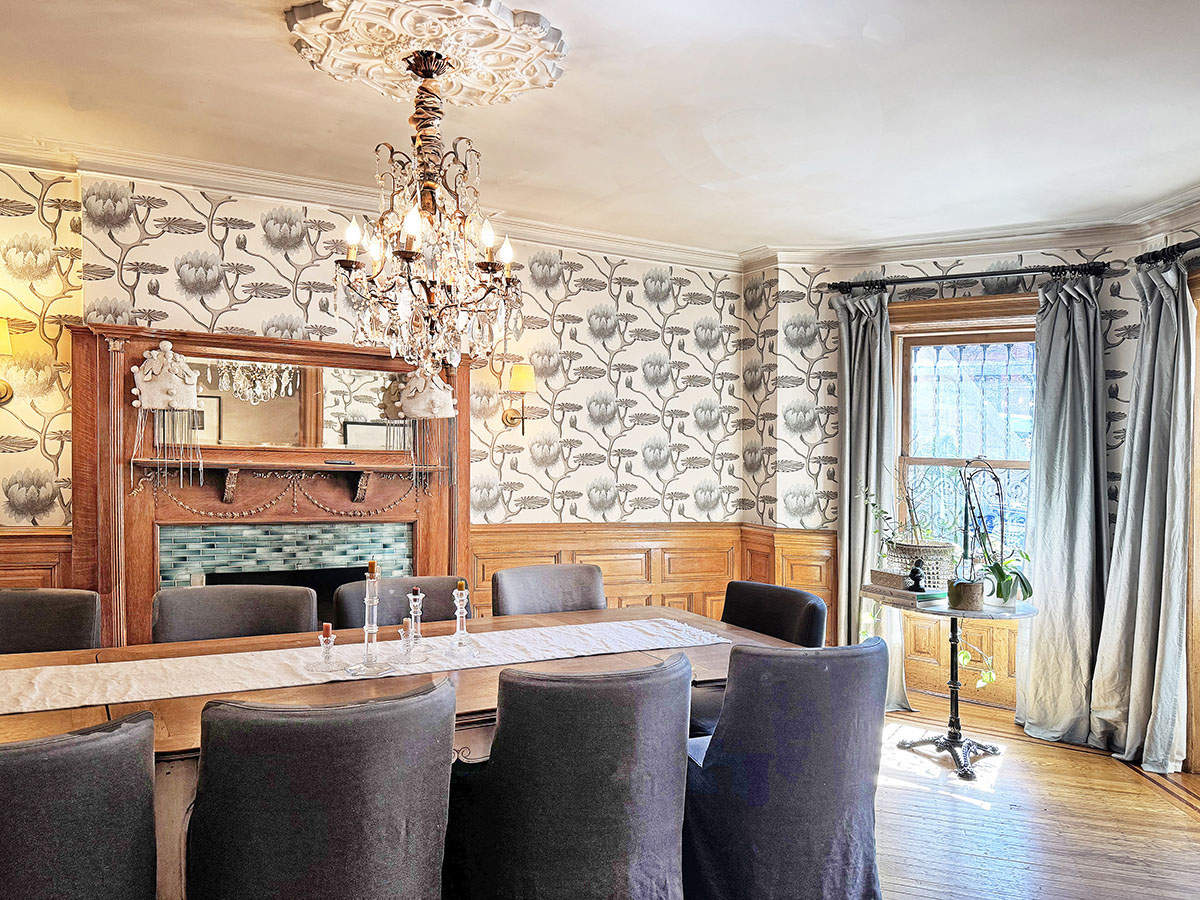Co-op of the Day: 47 Plaza Street West, #11C
How sweet it is! This four-bedroom apartment at 47 Plaza Street West in Park Slope has to be one of the finer pads within walking distance of the Park Slope Co-op. After spending the summer on the market, the 11th floor co-op sat out the fall selling season before getting back in the game again…


How sweet it is! This four-bedroom apartment at 47 Plaza Street West in Park Slope has to be one of the finer pads within walking distance of the Park Slope Co-op. After spending the summer on the market, the 11th floor co-op sat out the fall selling season before getting back in the game again this week with a price tag of $1,995,000. In addition to the size (2,270 square feet) and all the prewar detail, we are mighty impressed with all the windows and views this place brings to the table. Maintenance is a tough-to-swallow $3,008 per month though.
47 Plaza Street West, #11C [Corcoran] GMAP P*Shark





Brownstoner:
This is a fine building by Rosario Candela, for those of us who are fans of pre-War New York apartments, also known as the architect for 740 Park Avenue, recently dubbed “the most expensive apartment house in the world.” There prices can go over 30-million. For this top-of-the line Park Slope number, the price is a “mere” two-million. Seven-forty and other Candela buildings on the East Side also often require all-cash; here it’s only 25-percent down. For Brooklynites with a passion for Candela and can afford it, this apartment is a no-brainer.
What I love about this building is that you can see the architect struggle with the odd geometry of the site — and win! Sure there are odd nooks and crannies, but Candela’s mastery of the apartment “problem” allows him to provide the formality and hierarchy among rooms expected of upper-class apartments of the time within the building site’s complex intersection of triangle and circle.
Before the Depression, there were two great rivals in New York apartment-house design. Candela, who built the most expensive apartments in the city, and Emery Roth, who also built on Park and Fifth Avenues but was best known for upper-middle-class buildings like the Majestic and El Dorado along Central Park West. The contrasts between the two men’s differences are telling.
Candela’s work was more formal, the rooms bigger, the spaces more rigorously defined. Roth’s was slightly freer and spatially more economical and open. In hindsight, Roth was the more “advanced” architect, as was appropriate to his market of rising merchants and businessmen who reflected the emergence in New York of a robust Jewish middle- and upper-middle class. These were people who wanted to be “modern” as they moved from old-fashioned tenement neighborhoods. Candela, on the other hand, catered to a more established clientele of old-line, often Anglo-Saxon New Yorkers who grudgingly gave up their private houses to live in apartments and who found he could give them “houses in the air.”
As they did in Manhattan, Candela and Roth faced off in Park Slope, where their buildings share Grand Army Plaza and Prospect Park West addresses. Interestingly, both men were from immigrant families and sometimes built for developers who’d restrict people like them from living in the apartments they designed. (Roth wasn’t even allowed to join the American Institute of Architects, which at the time was run like a private club.) Nevertheless, they’d help define the skyline of New York — and a little bit of Brooklyn’s.
My own co-op is by Roth. Yes, it’s old and sags and squeaks in parts, but there’s nothing quite like stepping into the lobby with its five different marbles, bronze torcheres, trompe l’oeil ceiling and star-patterned terrazzo floor to make me feel I’m in New York. For a pre-War apartment aficianado, as great a high a brownstoner must feel arriving at his stoop.
Come to think of it, Mr. B., maybe I should start writing an occasional column about Brooklyn’s pre-War apartment houses. There are lots of great of examples by prominent architects like Candela and Roth and many others who are less known but whose work enriches the borough, including the brownstone belt.
Nostalgic on Park Avenue
All snarking aside, that pad looks totally bitchin’.
The only thing it seems to lack is outdoor space. With that view, I want a terrace upon which to lounge and survey my domain.
I think One Plaza also has an elevator operator, or at least it did a few years ago.
If I am not mistaken, this building still has an elevator operator. How very quaint. Annoying, mind you, but quaint.
hey 1121, suck on this!
Goldman May Lose Record Profit to Bid-Ask Spread: Chart of Day
http://www.bloomberg.com/apps/news?pid=20601109&sid=a4iH4BSl.4xQ&pos=15
$3000 is not a lot for an apartment of this size in a full service coop building. In Manhattan $3500 for this large an apartment would be on the low side. In a lot of these smaller prewar coops, the maintenance is not what it is because there is a huge underlying mortgage, but rather because of the salaries — chances are this building employs several doormen, a live-in super, and a porter or two. I understand that not everyone thinks it would be worthwhile to have a building staff — but if you work long hours, or if you’re looking for a place you can keep well into retirement, doormen and such can be invaluable.
Sadly, this building is not on the Columbia collection of original offering documents that NOP linked to last week.
11217, I confess I’m not that up on Brooklyn Candela buildings. This is certainly a great one, however. I need to do some research, and when I do, will do a Candela piece on Walkabout.
(to be clear, I’m the vegan and wealthy people are the hot dog eaters in this metaphor.)